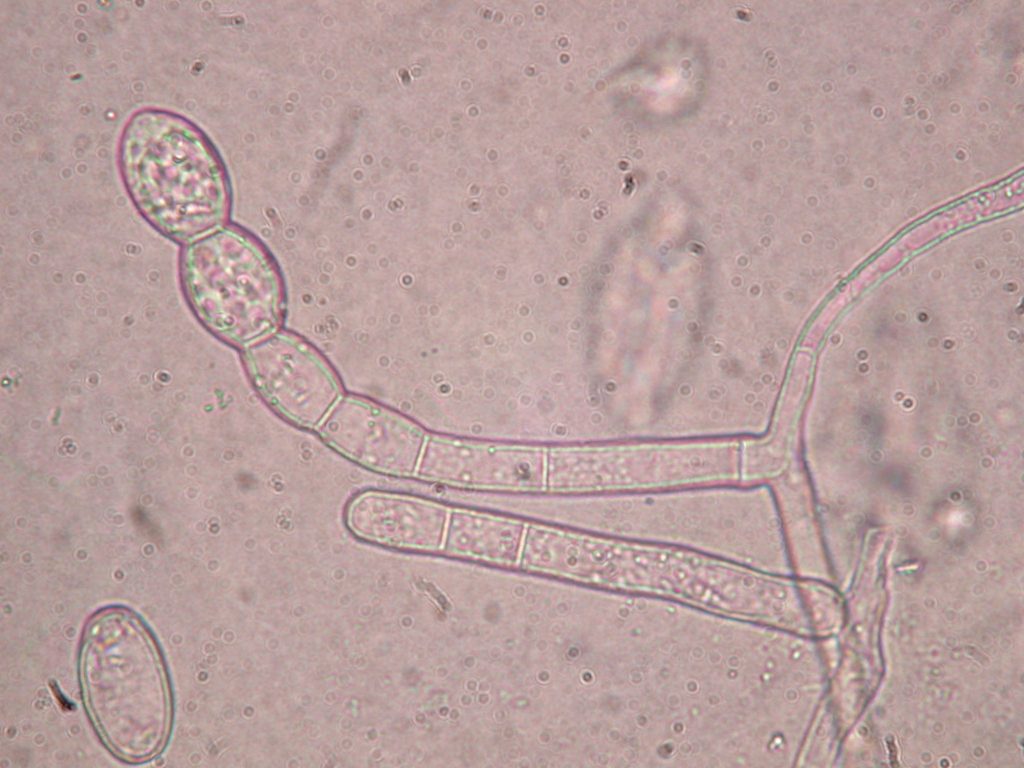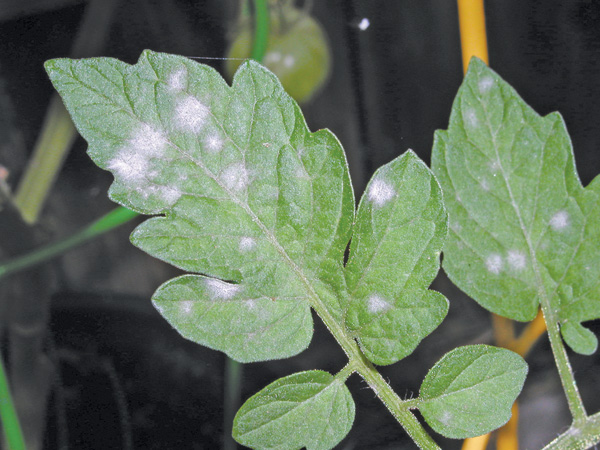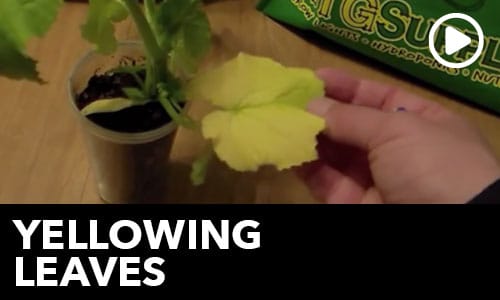Defining and Defeating Powdery Mildew
Growing indoors in a controlled environment comes with many benefits including an extra level of protection against pathogens and diseases. However, simply gardening indoors doesn’t offer complete protection from these types of issues, and one pathogen that often finds its way into grow rooms is powdery mildew (PM). This dusty disorder has the potential to devastate almost any crop, but understanding what powdery mildew is and where it comes from can help you overcome it, or better yet, avoid it altogether. This week, we’ll give you the tips and info you need to do just that. Plus, get the deal of the week on the supplies you need in order to be prepared!
What is Powdery Mildew?
Powdery mildew is a fungal disease, rather than a bacteria or virus. It is actually caused by not only one, but many closely related fungus species. Many of these species are actually plant specific, however, the most widespread varieties can affect a wide range of our favorite crops including squash, melons, beans, and tomatoes. The living fungus itself is biotrophic, which means it needs a host plant in order to live, unlike other pathogens that can grow on inanimate surfaces.

Once powdery mildew finds its way to the unfortunate host, it can take hold on almost any part of the plant. It is most noticeable on leaves or foliage though, which is usually where it is first discovered. It initially appears as small powdery spots that will begin to spread as the fungus grows, and will eventually cover the entire surface of leaves if left unchecked. An up-close examination reveals that powdery appearance of the fungus is actually created by clusters of tiny appendage-like spore-producing strands.

PM Disease Cycle and Damage Progression
Powdery mildew reproduces both sexually and asexually, which allows it to spread quickly and seemingly reemerge from nowhere. While the conidia (white powdery-looking strands) constantly release asexually produced spores, the fungus will also produce dark granular fruiting bodies or pods containing more spores. Thanks to these pods, spores can remain dormant for long periods of time on room or grow tent surfaces, as well as expired plant material. Outdoors, they can even overwinter in extreme cold before reanimating to infect the next crop cycle.

Although it lives on the surface of plants, powdery mildew does cause damage under the surface by penetrating the leaves, and feeding on them from within. As the fungus grows and spreads, it is not only draining the plant of vital fluids, but also preventing light from reaching the leaf surface. This decreases the plant’s ability to photosynthesize grow. Moderate powdery mildew infections can result in slowed growth and/or poor production, while severe cases can completely consume a previously healthy plant, fruit and all.
What Causes Powdery Mildew in Indoor Gardens?
If you’re experiencing a powdery mildew outbreak, chances are it found its way into your garden from an outside source. The usual suspects include clones from another garden, plants that were previously outdoors, and contaminated clothing/tools. Pest vectors such as aphids can also transport PM into your indoor growing space, and are often a sign that powdery mildew trouble could be coming. Once it finds its way in, the following issues will only compound the problem:
Unfavorable Temp/Humidity – Humidity and temperature usually play a large role in the onset of powdery mildew. While it can even grow and thrive in conditions that are generally considered favorable, large swings in temperature and relative humidity between day and night lighting cycles can provide the perfect breeding opportunities for the fungus.
Overcrowding – It can be all too tempting to try to utilize every square inch of the grow room, but this often results in conditions that create vulnerabilities to infections by powdery mildew. Lack of proper plant spacing and/or excess foliage results in poor air circulation. This provides pockets of high humidity where the disease can begin to grow.
Weak/Stressed Plants – Plants coping with other unfavorable conditions such as overwatering are all the more susceptible to powdery mildew. The presence of pests or pest-inflicted damage can also hasten the onset and spread of PM.
How to Prevent Powdery Mildew in the Grow Room
General plant health plays an important role in PM prevention as plants have their own natural defense mechanisms that help them battle pathogens. While proper watering and nutrition regimens help plants resist PM, it will not make them immune. Aside from maintaining overall plant health, a large part of preventing powdery mildew includes these best practices:
- Keep the area clean and free of any debris including plant material that might harbor PM.
- Clean and sterilize tools/container after each use, especially if they have been used outdoors.
- Avoid entering the grow room area after being around plants outside.
- Do not introduce outdoor plants or clones from another garden directly into the indoor garden.
- Ensure plants are well spaced and trimmed to provide proper air circulation – read our post on grow room air circulation to learn how!
- Ensure proper temperature and humidity levels through the use of proper grow room ventilation.
- Utilize proper filtration such, in particular, HEPA filters, for air entering the grow room.
Taking these measures will go a long way to prevent powdery mildew outbreaks, but in areas particularly susceptible to PM or cases of high-value crops, active prevention methods may be in order. There are a wide variety of products available for use in PM integrated pest management (IPM) solutions including botanical extracts like neem oil and cottonseed oil, as well as biological controls like bacillus subtilus, a bacteria found in products like Serenade fungicide. As with any IPM plan, it is important to rotate multiple products to help prevent pathogens from developing resistance.
Powdery Mildew Treatment
Step one of treating powdery mildew is going back and correcting any environmental factors that led to the problem in the first place. Failing to correct the root cause of the problem will make any treatment efforts far more challenging. If large changes in temperature or humidity are observed or known to occur, a grow room ventilation upgrade is likely in order. If not already in use, filtration such as HEPA air filters should be added to the air intake to prevent PM and other pathogens from entering the grow room through the ventilation system.
If any foliage has suffered severe damage such as complete PM surface coverage, curling, wilting, or necrosis, those areas should be removed and properly disposed of or destroyed. If some plants are particularly infested or have little foliage remaining, the best idea may be to cut your losses and remove those plants from the garden altogether. Note: NEVER compost any infected plant material! Pathogens such as PM will remain dormant in compost and fully ready to strike again when or if it is used. Once these matters are handled, there are a wide variety of products that can be used to keep PM under control.
Organic Powdery Mildew Killers
There are several treatment options for organic gardeners dealing with powdery mildew. While many of the same organic products that are suitable for use in preventing PM can also be used to treat it, biological controls like Serenade are more effective when used as a preventative measure. No worries though as there are several OMRI certified mildew killers available including these popular choices:
Organocide – This OMRI-approved is derived from all natural oils, non-toxic to beneficial insects including bees and ladybugs, and completely safe for use around the indoor garden. As a side bonus, it is also effective for pest prevention and control purposes.
SaferGro Powdery Mildew Cure – A favorite of many growers, SaferGro Mildew Cure is composed of botanical extracts including cottonseed and garlic oils. Available in both concentrate and ready-to-use spray bottles, all of the active ingredients in Mildew Cure are actually derived from food grade materials and completely harmless to people and pets.
GreenCure – This potassium bicarbonate-based fungicide effectively treats PM as well as blackspot, downy mildew, blights, molds and other plant diseases. Applied as a foliar spray, the active ingredient will elevate pH levels on the plant surface, killing any mold/spores present.
Other Proven PM Treatment Products
If OMRI-listed treatments are not a must, there are a number of other ways to deal with PM including a wide range of home remedies. While you might have something available in the cupboard that could help you treat powdery mildew, horticultural PM treatment products are specially formulated for maximum effectiveness. Many of these options including sulfur-based sprays like SaferGro Garden Fungicide are all natural and can be used to control PM up until the day of harvest. Neem products like Einstein oil are also common treatment options. Made from neem tree fruit/seed extract, neem oil can interfere with powdery mildew’s ability to spread and offers protection from insects as well, but it is best used as a preventative measure rather than a cure.
You might not run into PM in your first, second, or even your tenth grow cycle. If you grow indoors for any significant length of time though, chances are, this frustrating fungus will turn up in your grow room at some point. If there is any positive here though, it is that best practices can drastically reduce your chances of seeing it and its ability to ruin your crop if it does turn up on your plants. Plus, there are a wide range of treatments that will effectively treat and prevent powdery mildew spread, even if you’re working with an organic garden.
____________
If you’ve successfully defeated powdery mildew with these treatments or any others, throw a picture on Instagram and tag us in it (@HTGSupply) – we’d love to see your results! And don’t forget to check out this week’s coupon code and sale information below! From all of us here, good luck, stay safe, and Happy Growing!

THIS WEEK’S COUPON CODE: TSPM120817
Enter this week’s promo code at checkout for a 10% discount on any of our fungicide products or visit your local store and simply mention this article to get the deal! Thanks again for tuning into Talking Shop with HTG Supply! Offer valid through HTGSupply.com and in-store 12/8/17-12/15/17. Cannot be combined with other offers. Follow us on social media for all the Sales, Events and Customer Appreciation Days. In addition, learn more about indoor growing and get all kinds of tips, tricks and techniques!


